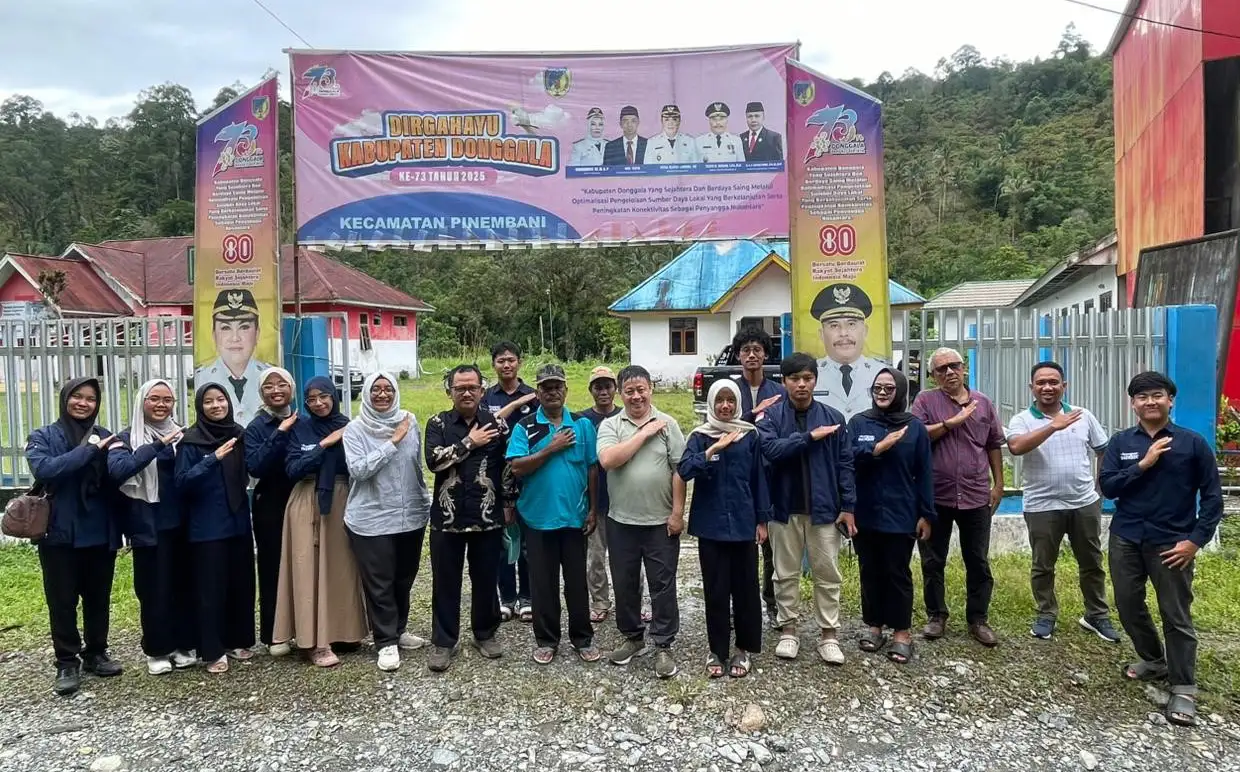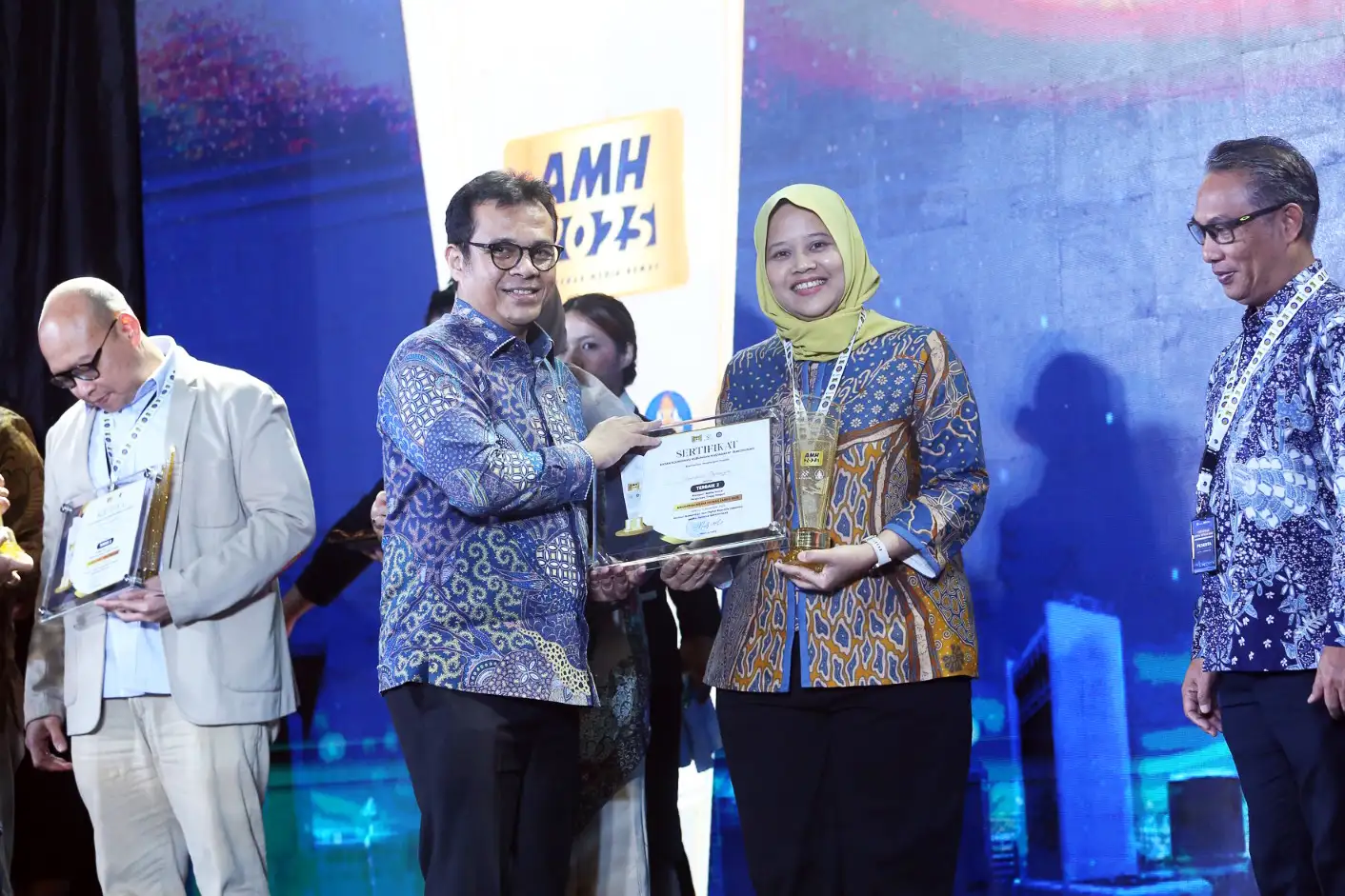Mohamad Endy Yulianto, a lecturer in Undip Vocational Industrial Chemical Engineering Technology (TRKI) Lecturer, once again received recognition for his Intellectual Property achievements from the Academic Directorate of Vocational Higher Education. The Ministry of Education, Culture, Research and Technology Award was recently attended by representatives of all universities under Diksi at the Sahid Jaya Hotel & Convention Yogyakarta, with the theme of the Implementation of Tri Dharma in Higher Education.
The Directorate General of Diksi, Kiki Yuliati, explained that the award program was honored for the lecturer’s dedication and contribution to the implementation of Tri Dharma of Higher Education. Furthermore, the APTV Director, Beny Bandanadjaja, stated that vocational universities should be motivated and encouraged by improving the quality of education, including the achievements of Intellectual Property resulting from research and community service.
Endy’s downstream research partnered with the green tea industry PPTK Gambung and PT. Rumpun Sari Medini was funded by RISPRO LPDP with the study “Development of Mini Plant Super Competitive Green Tea through the Inactivation Process by using Mechanically Dispersed-Rotary Steamer.” The innovation of this research is an improvement of green tea catechin levels, which are very attractive, so the actual potency of green tea will be feasible in conquering lethal diseases.
This research with TKT (Technology Readiness Level) 7–9 resulted in patents, industrial steamer-cooling TTG, business plan documents, SOPs, market studies, and feasibility studies (FS). Patent granted Number IDS000007201 titled “Enzymatic Inactivation Process for Green Tea Making using Cylindrical Dispersion Steamer” and Number P00200202255 with the invention “Mechanically Dispersed-Rotary Steamer Integrated Cooling Tool for Enzymatic Inactivation Process” are implemented in the PPTK Gambung Green Tea industry, as stated by the owner of this granted 22 patent.
“The research motivated by his concern about the world tea market, which is overshadowed by the symptoms of oversupply and production costs, tends to increase, requiring tea producers to increase competitiveness and added value. Even environmental problems have helped encourage the development of new market segments for tea products, namely consumers who want environmentally friendly and healthy products. Even though tea is the most popular drink after water, it is consumed daily by millions of people worldwide. The health aspects of tea have also been highlighted sharply in recent years in line with the tendency of people to consume substitute food or drinks as a balance of a diet rich in fat and cholesterol,” explained Endy.
Endy, who has published 65 reputable international papers in the indexed Scopus, explained that green tea with polyphenols such as catechin, epicatechin, epigallocatechin, epicatechin gallate, epigallo catechin gallat and gallic acid is stated to have anti-cancer activity, maintain heart health, is anti-oxidant, anti-microbic, prolongs the menopause period, prevent cardiovascular disease, obesity and other degenerative diseases. However, green tea processing in Indonesia generally has a catechin content of ± 10.81% by dry weight. The level of catechins in this green tea is relatively low because it partially undergoes catechin oxidation, thermal degradation, and epimerization of catechins and is, in principle, carried out through stages: panning, rolling, drying, sorting, and packing.
However, the stage that determines green tea quality is the process of enzymatic inactivation in the cytoplasm of tea leaves. “So far, the inactivation method of the polyphenol oxidase and hydroperoxides enzymes for the production of green tea in Indonesia is panning with a fairly large energy requirement, which is 6,097 kJl/kg of tea or equivalent to the need for fuel 0.12 litres of IDO/kg of dry tea. The fundamental weakness of the panning method is that heat penetration cannot activate the enzyme as a whole, the catechins are thermally degraded, and the black tea color is produced due to the degradation of chlorophyll to pheophytin,” said Endy.
Endy explained the results of collaboration research with the team members consisting of Dr.Eng. Vita Paramita, S.T., M.M., M.Eng; Prof. Dr. Eflita Yohana; Dr. Indah Hartati; Dr. Dadan Rohdiana; and Didik Ariwibowo, S.T., M.T. through enzymatic inactivation technology using the mechanically dispersed-rotary steamer process can reduce energy consumption and increase productivity to reach Rp.1,620/kg of green tea. The results of commercial research also increased catechin levels from ± 10.81% (panning) to ± 17.81% dry weight. This high catechin level is very productive in fighting various deadly diseases.
Hopefully, the entire green tea industry will apply steaming technology that has been well-proven so that productivity and quality of catechin will increase and be healthier. “The team hopes that the results of commercial research can be useful for the green tea industry, the pharmaceutical industry as raw materials for catechin preparations, tea planters, and people who consume healthy green tea as a popular functional food for use today,” concluded Endy.










